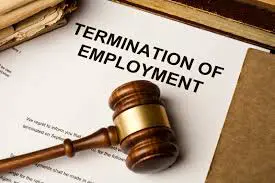I think I’ve been wrongfully terminated. What do I need to prove in order to bring a wrongful termination in violation of public policy claim under Ohio law?
Ohio is an at-will employment state. Unfortunately, this means that for the vast majority of employees, their employer may terminate them for any reason or even no reason at all. However, there are exceptions to this general rule. A claim for wrongful termination in violation of public policy arises where the employee is fired under circumstances that violate certain laws put in place to protect public health and safety.
Our Columbus employment lawyers breakdown how to succeed on a claim of wrongful termination in violation of public policy in Ohio. An employee must prove four separate elements:
A clear public policy existed and is established in a federal or state constitution, law, or administrative regulation;
- The circumstances of the employee’s termination jeopardize this public policy;
- The employee’s termination was motivated by his conduct relating to the public policy; and
- The employer lacked an overriding business justification for the employee’s termination.[1]
The “clear public policy” at issue typically involves reporting criminal conduct or reporting unsafe or unsanitary working conditions. For example, one Ohio court found that public policy favors either reporting or refusing to commit criminal acts.[2] Another court found that public policy favors reporting unsafe working conditions to government agencies such as OSHA,[3] and yet another court found that public policy favors reporting unsanitary handling or preparation of food.[4]
If an employee is fired for making such reports, then the employer has placed the public policy in jeopardy, satisfying the second element. This is true because if employees knew they could be fired for making reports that protect the public, this would discourage them from doing so in the future. The employee must also prove there is a connection between the report made and his termination. If the employee can prove he was fired as a result of making the report, he can satisfy the third element.
Finally, the employee must also prove there was no “overriding business justification” for his termination. If the employee can prove there is no other reasonable explanation for his termination other than the fact that he made a report or otherwise took action to protect public health and safety, then he can satisfy the final element of his case.
Each situation is different, and a thorough review of the facts may be required to determine if the circumstances of a specific termination meet the above elements. If you believe you have been wrongfully terminated or have other questions about your employment, please reach out for a free consultation.
Mansell Law LLC
For additional information on other legal claims, visit our practice areas page.
[1] Dohme v. Eurand Am., Inc., 130 Ohio St.3d 168, 2011-Ohio-4609, 956 N.E.2d 825, ¶ 12–16.
[2] Dunnigan v. City of Lorain, 9th Dist. Lorain No. 02CA008010, 2002-Ohio-5548, ¶ 30.
[3] Pytlinski v. Brocar Prods., 94 Ohio St.3d 77, 79, 760 N.E.2d 385 (2002).
[4] Miller v. MedCentral Health Sys., 5th Dist. Richland No. 2005CA0049, 2006-Ohio-63, ¶26.

